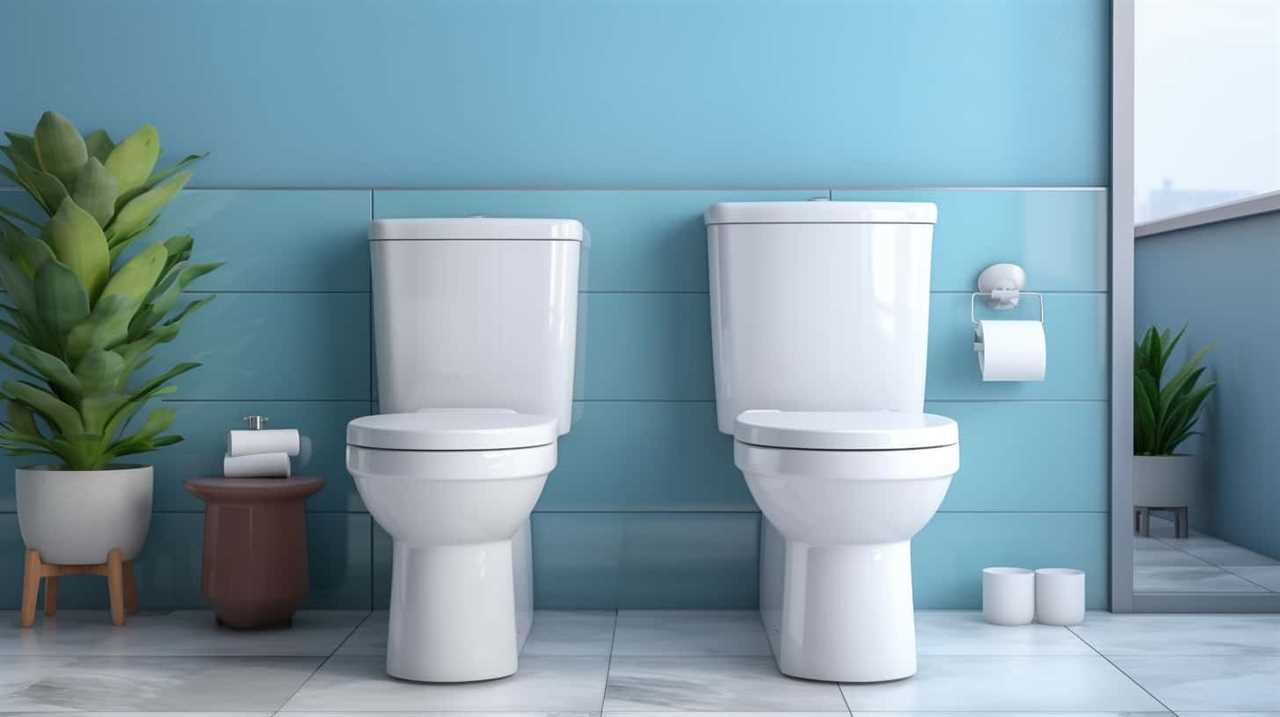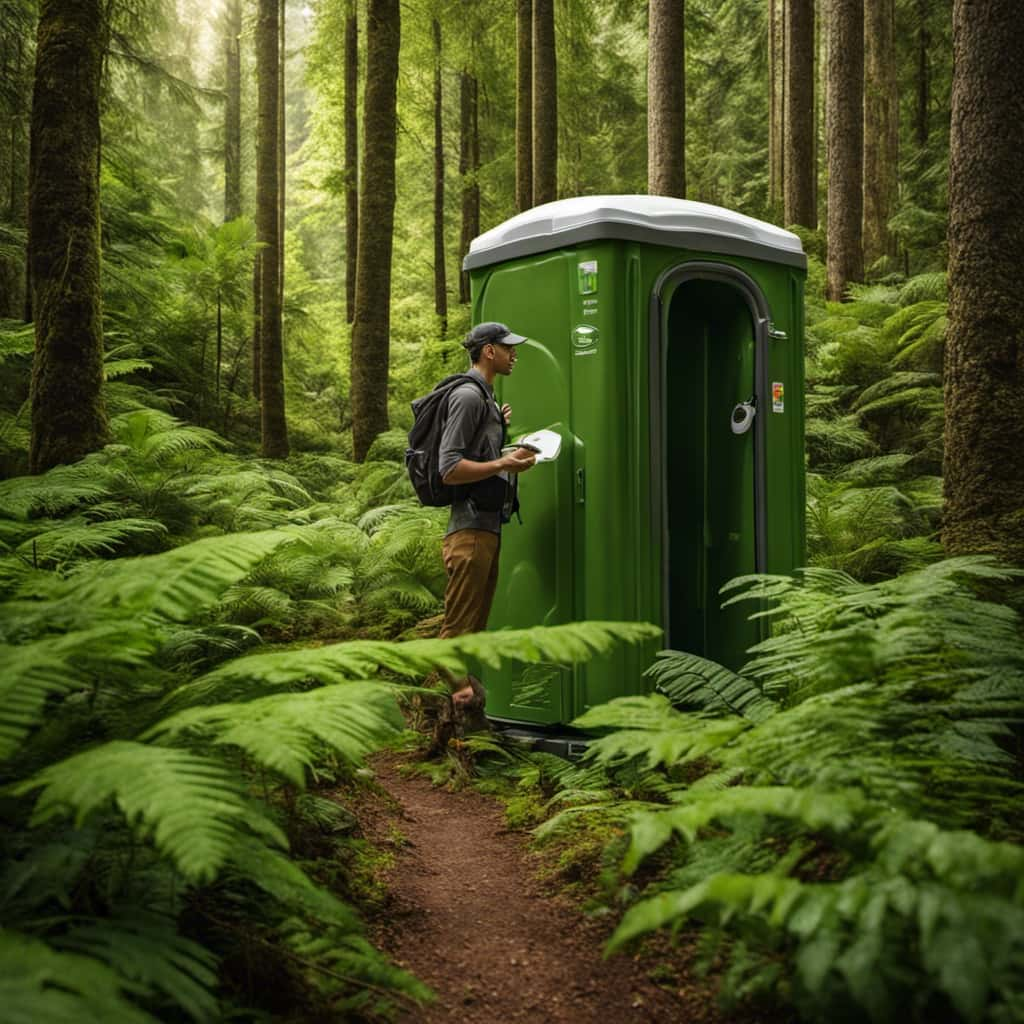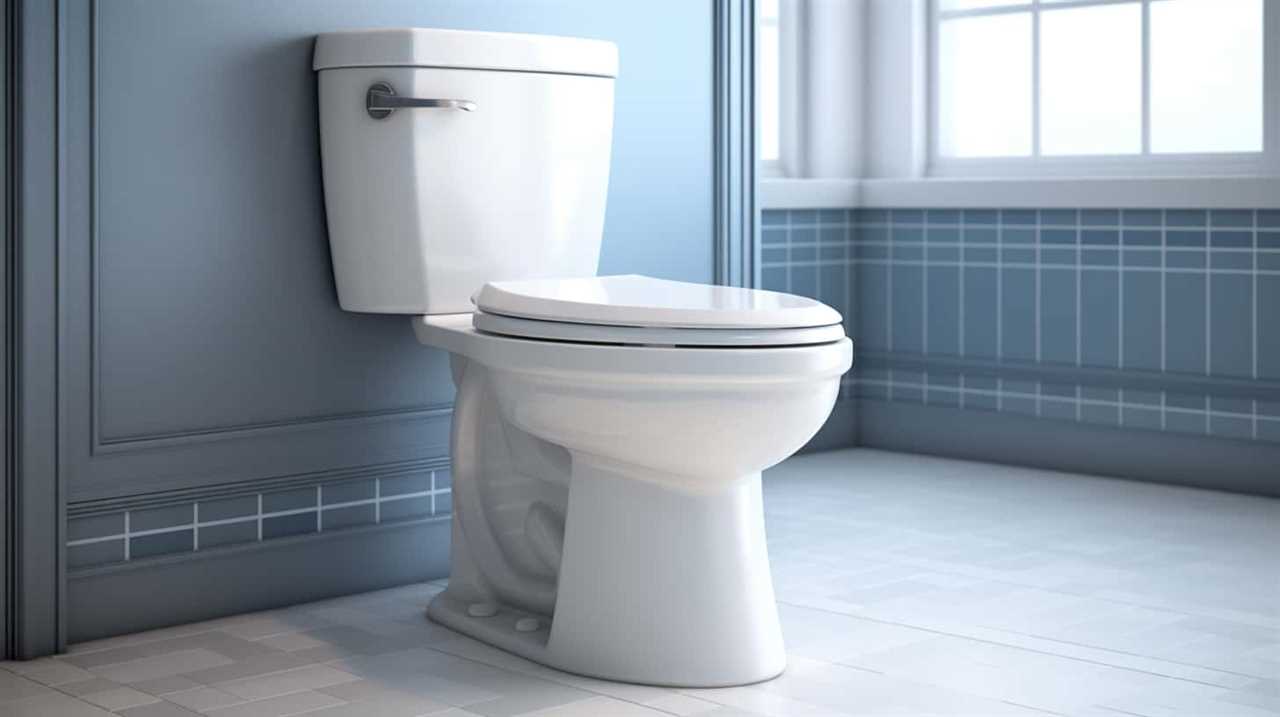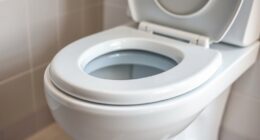Did you know that a toilet dual flush can save up to 50% more water than a traditional toilet?
We, the experts, are here to guide you through the ins and outs of this innovative bathroom fixture.
In this article, we will explain how a toilet dual flush works, the benefits of using one, and provide tips on installation and maintenance.
Join us as we dive into the world of toilet dual flushes and help you make an informed decision for your bathroom.

Key Takeaways
- Toilet dual flush mechanism consists of two buttons or levers on top of the tank
- Dual flush toilets minimize water usage and reduce water bills
- Dual flush toilets provide effective flushing for both solid and liquid waste
- Regularly check for leaks or water wastage and clean the toilet tank and bowl regularly to ensure optimal functioning of the system
How Does a Toilet Dual Flush Work
To understand how a toilet dual flush works, we need to examine the mechanism that allows us to choose between a full flush and a partial flush.
The toilet dual flush mechanism consists of two buttons or levers located on top of the toilet tank. These buttons control the release of water into the toilet bowl during flushing.
When the user presses the full flush button, a larger amount of water is released, providing a powerful flush to remove solid waste effectively.
On the other hand, when the user presses the partial flush button, a smaller amount of water is released, suitable for liquid waste.

The advantages of dual flush toilets are twofold: water conservation and cost savings. By allowing users to choose between a full flush and a partial flush, dual flush toilets minimize water usage, saving gallons of water each day and reducing water bills.
Benefits of Using a Toilet Dual Flush
Using a toilet dual flush offers significant advantages, including water conservation and cost savings, which we’ll explore further in this article.
One of the main benefits of a toilet dual flush is its cost-effective water conservation feature. Traditional toilets consume a significant amount of water with every flush, wasting precious resources and driving up water bills. However, with a dual flush system, you have the option to use a lower volume flush for liquid waste, reducing water usage. This not only helps conserve water but also leads to cost savings in the long run.
Additionally, dual flush toilets have a positive environmental impact compared to traditional toilets. By reducing water consumption, they contribute to the conservation of water resources and help mitigate the strain on local water supplies.

Installation and Maintenance of a Toilet Dual Flush
When installing and maintaining a toilet dual flush, we should consider a few key factors. Proper installation and regular maintenance are crucial to ensure the optimal functioning of the dual flush system.
Here are some important points to keep in mind:
- Regularly check for leaks or water wastage. A faulty dual flush can lead to inefficient water usage and increased utility bills.
- Clean the toilet tank and bowl regularly to prevent mineral buildup and clogging. Use non-abrasive cleaners to avoid damaging the flushing mechanisms.
- Familiarize yourself with common misconceptions about toilet dual flushes. For instance, some people believe that dual flushes are prone to clogs, but with proper maintenance and usage, this can be minimized.
Choosing the Right Toilet Dual Flush for Your Bathroom
For our bathroom, we need to select a toilet dual flush that suits our needs and preferences. When it comes to toilet dual flush options, there are several models available in the market. To help you make an informed decision, let’s compare some of the popular models:
| Model | Flush Type | Water Savings |
|---|---|---|
| Model A | Full Flush: 1.6 GPF | 50% |
| Half Flush: 0.8 GPF | ||
| Model B | Full Flush: 1.28 GPF | 60% |
| Half Flush: 0.8 GPF | ||
| Model C | Full Flush: 1.6 GPF | 50% |
| Half Flush: 0.6 GPF |
As you can see, the models vary in terms of flush type and water savings. Consider your water conservation goals and preferences when selecting the right toilet dual flush for your bathroom. In the next section, we will discuss tips for maximizing water savings with a toilet dual flush.

Tips for Maximizing Water Savings With a Toilet Dual Flush
To maximize water savings with a toilet dual flush, we can employ a few simple strategies. By implementing these water conservation techniques, we can make our bathrooms more eco friendly. Here are some tips to help you maximize water savings with your toilet dual flush:
- Monitor your water usage: Keep track of how much water you use each time you flush. This will help you identify any areas where you can make improvements.
- Use the appropriate flush: One of the main advantages of a dual flush toilet is that it offers different flushing options for liquid waste and solid waste. Be sure to use the appropriate flush to avoid wasting water unnecessarily.
- Regular maintenance: Keeping your toilet in good working condition is essential for water conservation. Check for leaks and make any necessary repairs promptly.
Frequently Asked Questions
Is a Dual Flush Toilet More Expensive Than a Regular Toilet?
A dual flush toilet offers advantages such as water conservation and cost effectiveness. In terms of cost, it may be more expensive initially, but the long-term savings on water bills make it a worthwhile investment.
Can I Install a Dual Flush System in My Existing Toilet?
Yes, we can install a dual flush system in your existing toilet. The installation process is straightforward and can be done without professional help. The benefits of a dual flush system include water conservation and cost savings.
How Much Water Can I Save With a Dual Flush Toilet Compared to a Regular Toilet?
A dual flush toilet can greatly reduce water consumption compared to a regular toilet, resulting in significant savings and a positive environmental impact. The precise amount of water saved will depend on usage patterns and individual habits.

Are There Any Drawbacks to Using a Dual Flush Toilet?
There are potential drawbacks to using a dual flush toilet, such as increased maintenance requirements. However, the water-saving benefits outweigh these concerns. Regular upkeep is essential to ensure the toilet functions properly and continues to conserve water effectively.
Do All Dual Flush Toilets Have the Same Flushing Power?
Yes, not all dual flush toilets have the same flushing power. It depends on the model and brand. Regular maintenance is crucial for optimal performance. The benefits of dual flush toilets include water conservation and reduced utility bills.
Conclusion
In conclusion, the toilet dual flush is a marvel of engineering, allowing us to conserve water while still maintaining our hygiene needs. It offers the perfect balance between efficiency and convenience.
However, it’s ironic that despite its technical brilliance, we still waste water in countless other ways.

So, while the toilet dual flush is a step in the right direction, let’s not forget the larger challenge of sustainable water management that lies ahead.










